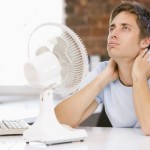Yesterday was National Stress Awareness Day ( find out more here https://patienttalk.org/?p=1354).
Today we are delighted to share with you a video on how to de-stress and unwind using exercise!
Wellbeing director Louise Day, fitness guru Justin Edwards, and Yoga expert Louise Hutchings, explore how we can help to look after and improve our complete wellbeing.
Having a healthy wellbeing plays a large role in defining our character, personality and health, but so many of us our guilty of neglecting to take care of our mind, body and soul.
Increasing numbers are struggling to switch off and relax, resulting in damaging effects on our physical and emotional health. With people leading increasingly busier lifestyles; it is becoming more important than ever to ensure we are taking time to relax and look after our complete wellbeing.
A report released yesterday, revealed great concern for our wellbeing; with our physical health, levels of tiredness and weight as the top three wellbeing concerns stressing the nation. So what can we do to help boost our complete wellbeing?
Maintaining our fitness levels is extremely important in allowing us to lead a healthy lifestyle; and exercise can help us feel less tired and more focused on our everyday tasks; as well as help to keep our weight at a healthy balance.
Taking time out to relax and unwind is crucial to ensuring a good state of physical and emotional health. Yoga is a beneficial form of exercise that can greatly benefit our physical, mental and spiritual state. It can be used to increase our energy and physical well-being; and its disciplines can be incorporated into everyday life.
In this video, brought to you by Champneys, Louise; Justin and Louise will share expert advice, valuable tips and demonstrations to ensure our wellbeing is looked after even in our busy schedules.
Watch our video offering you important advice on achieving a healthy mind, body and soul.
Watch the video here http://www.youtube.com/watch?v=VtwRpzj6iPs&feature=youtu.be



